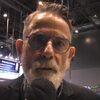Explore all the information on
Swine genetics and reproduction
The performance of pigs is the result of two influences: genetics and environment. Because the genetics of a pig plays an important role in its performance and meat quality, all pig producers should be familiar with the potential and application of genetic selection.
The genetic potential of pigs can have a major influence on the productivity and profitability of a pig enterprise. It is the combination of genetics, nutrition, health, environment and management that influences such factors as litter size, growth rates and carcass quality.
The reproductive herd is for the multiplication of maternal and paternal lines that are prized for economically valuable reproductive traits, or, traits that generate desirable offspring reliably. Typically, prized reproductive traits include litter size, particularly total number of pigs born, and pigs weaned, weight of the litter of piglets at birth and weaning, wean-to-estrus interval (WEI), and pigs per sow per year (PSY). In more recent years, length of time a sow remains productive in the herd (longevity or survivability) is increasing in priority for major genetic lines. These traits are prioritized due to the impact on value of the sow to the herd.
Introduction The use of high quality boar semen is critical to obtaining desired herd fertility goals. When using artificial insemination (AI) in a breeding program, the semen supplier becomes an external input which can effectively drive a customer’s herd reproductive performance. Depending upon circumstance, this input can either aid in or interfere with achieving herd production goals. Abrupt increases in regular return rates leading to repeat services may serve as...
Comments : 0
Recommendations: 0
Background Primiparous sows (PP) have higher nutrient requirements [1, 2] and fewer piglets born than multiparous sows (MP) [3]. Usually, PP sows are bred before they reach mature body size and when the back fat levels are still limited and often times below the recommendation of 18.0–23.0 mm at first insemination [4]. Part of the nutrient intake of a PP sow during the reproductive cycle is still used for their own tissue growth [5]. Piglet birth weight and growth...
Comments : 0
Recommendations: 0
Introduction Vulvar discharges are related to reproductive tract infections that can lead to decreased sow fertility and other impairments in zootechnical indices, which reduces profitability 1,2,3 . However, knowledge about metrite causative agents in sows is still very superficial. Staphylococcus hyicus – a Gram-positive, coagulase variable, facultative anaerobic, catalase-positive, non-hemolytic, non-motile bacteria - may be able to cause metritis in...
Comments : 0
Recommendations: 0
Introduction Sow longevity is defined as the time elapsed from gilt entry into the breeding herd until removal as a result of culling or death. Increasing herd retention rate is important to maximize sow lifetime productivity. Higher removal rate implies an increase in the percentage of young females in the herd, a category with lower production potential, and a higher risk of early culling. Systematic gilt replacement is required for genetic gain. Still,...
Comments : 0
Recommendations: 0
One of the most pressing problems that has attracted considerable publicity in the last few years is the prospect of widespread multidrug resistance leading to a breakdown in human healthcare systems throughout the world. The O’Neil report (O’Neil et al 2016), estimates “that by 2050, 10 million lives a year and a cumulative 100 trillion USD of economic output are at risk due to the rise of drug- resistant infections”. The O’Neil report recommends a...
Comments : 0
Recommendations: 0
Introduction While meat production generates food and a livelihood for billions of people around the planet, it is also associated with environmental and health consequences (OECD 2016). Among production animals, chickens and pigs are species of enormous economic importance for humans, with chickens being the most consumed meet source in the world (13.8 kg/capita in 2016) followed by pigs (12.3 kg/per capita in 2016) (OECD 2016). Given the cultural...
Comments : 0
Recommendations: 0


Enhancing Swine Reproduction by Improving Health and Reducing Oxidative Stress
Suggested link
INTRODUCTION Substantial increases in litter size have occurred in commercial swine production over recent years which have been accompanied by increases in pre-weaning piglet mortality. The number of piglets born alive to sows on U.S. units currently averages approximately 13.5; this number has increased by approximately three piglets over recent years (PigChamp, 2004, 2020). Pre-weaning mortality levels have also increased over this time period and currently average in...
Comments : 0
Recommendations: 0
1. Introduction With 1766–1768 nucleotides, porcine circovirus type 2 (PCV2) is the smallest genomic panzootic associated virus among the circular single-stranded DNA (ssDNA) viruses hitherto. These ssDNA viruses are remarkably understudied, and only recently have researchers begun to study these viruses due to the advent of next-generation sequencing in birds, fish, mammals, and even humans [1,2]. The small genome of PCV2 encodes at least nine different transcripts...
Comments : 0
Recommendations: 1
...
Comments : 0
Recommendations: 0
Introduction As the economic success of sow husbandry relies very much, but not solely, on the ability of sows to produce a high number of piglets per sow per year, a high sow litter size contributes to this goal. Genetic selection for higher litter size has resulted in a steady increase in sow litter size in the last decades, and this increase in litter size still continues. For example, in the Netherlands, sow litter size (total number born) has increased...
Comments : 0
Recommendations: 0


Evonik upgrades logistics infrastructure for MetAMINO® in Antwerp
Suggested link
Introduction Despite the wealth of information on the many factors that affect sexual maturation and the early breeding performance of gilts, it has been difficult to establish the needed protocols that produce a consistent supply of “good quality” replacement females. In the context of the latest genotypes available to the production industry, it is important to keep addressing the changing biology of the nucleus sows from which replacement...
Comments : 0
Recommendations: 0
Introduction Pork’s historic position as the world’s most popular meat is no more. 2019 was characterized by the explosion of African Swine Fever in China and subsequent slaughter of approximately half of that country’s pigs, representing about 25% of the world's production. Allowing for this catastrophe the exorable rise in the global consumption of chicken ensured it always going to result in its accession to No.1 spot worlds, but...
Comments : 1
Recommendations: 1
Introduction In a recent detailed review of the factors determining reproductive development in the gilt (Patterson and Foxcroft, 2019), we suggested that “Substantial evidence supports successful management of gilts as an absolutely necessary component of breeding herd management and the pivotal starting point for the future fertility and longevity of the breeding herd”. We also discussed the link between earlier sexual maturation and improved...
Comments : 0
Recommendations: 0
INTRODUCTION Estrus synchronization is a well-established tool for the reproductive management of a variety of livestock species. Manipulating the estrous cycle of domestic animals is thus essential for improving livestock productivity, as it helps to generate more income for the farmer through the utilization of assisted reproductive techniques like artificial insemination, in vitro fertilization and embryo transfer technologies. In gilts, estrus manipulation is being...
Comments : 0
Recommendations: 0
Introduction This article identifies the most significant research innovations that, in our opinion, have been applied by the North American pork industry in the past decade. They are primarily the result of leading edge research in North America. Research discoveries were not considered unless they were being integrated into practice, with the exception of gene editing for pathogen control, which is in the approval process. Innovations that we identified as...
Comments : 0
Recommendations: 0
Introduction All over the world, E. coli is an important cause of a wide range of diseases in pigs, including postweaning diarrhea (PWD) (Fairbrother et al., 2019). Diarrhea due to E. coli may result in significant economic losses due to morbidity, mortality, decreased weight gain, and cost of treatment, vaccinations and feed supplements. Clinical signs fluctuate with time and regions and may range from mild diarrhea with 1.5 to 2% mortality...
Comments : 0
Recommendations: 0


Enhancing Swine Reproduction by Improving Health and Reducing Oxidative Stress
Suggested link
Introduction Resilience was historically ignored in commercial swine breeding programs. One reason was that breeding companies need to supply high health animals to the commercial sector of the swine industry. Nucleus herds needed to be naïve or at least negative for major diseases such as porcine reproductive and respiratory syndrome virus (PRRSv), Actinobacillus pleuropneumoniae (APP), Mycoplasma hyopneumonaie , and other major diseases....
Comments : 0
Recommendations: 0
Dr. Billy Flowers (NC State University) discusses reproductive management in depth during a Swine It interview with host Márcio Gonçalves....
Comments : 0
Recommendations: 0
Dr. Steve Pollmann (DSP Consulting LLC) discussed many aspects of the pork production industry in this Swine It interview with host Márcio Gonçalves....
Comments : 0
Recommendations: 2
1. Introduction Increasing robustness, resilience and efficiency of livestock are pivotal topics in animal science because of their importance to profitable meat and dairy production, but also for ethical, animal welfare and sustainability reasons [1,2]. In this review, we investigate and discuss potential benefits of omics technologies for optimizing stress resilience and reducing damaging behaviour in livestock, in particular pigs. Resilience, i.e., the capacity to quickly...
Comments : 0
Recommendations: 0
























